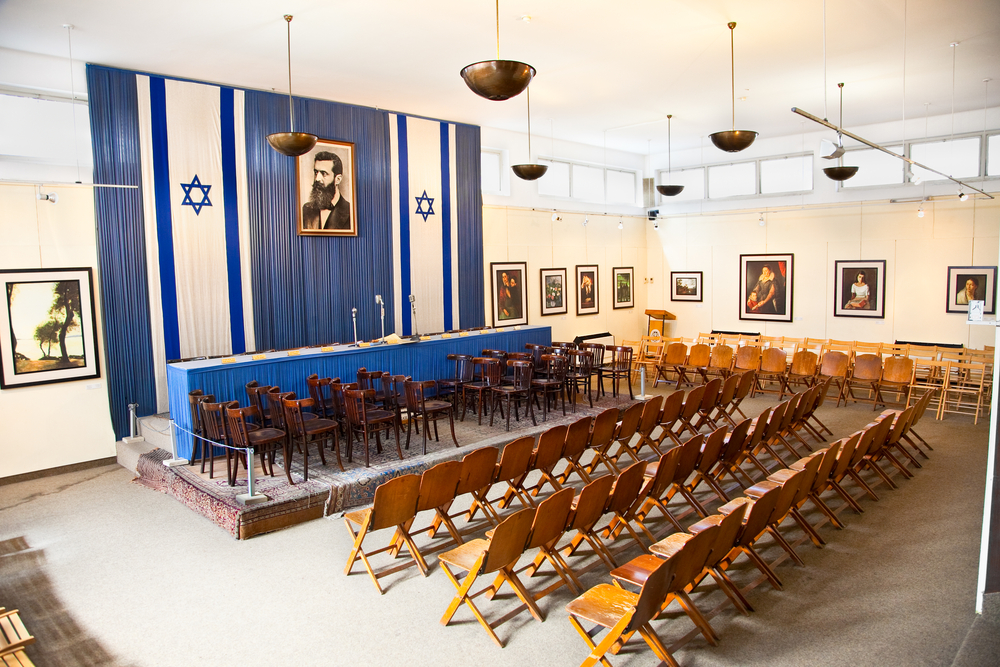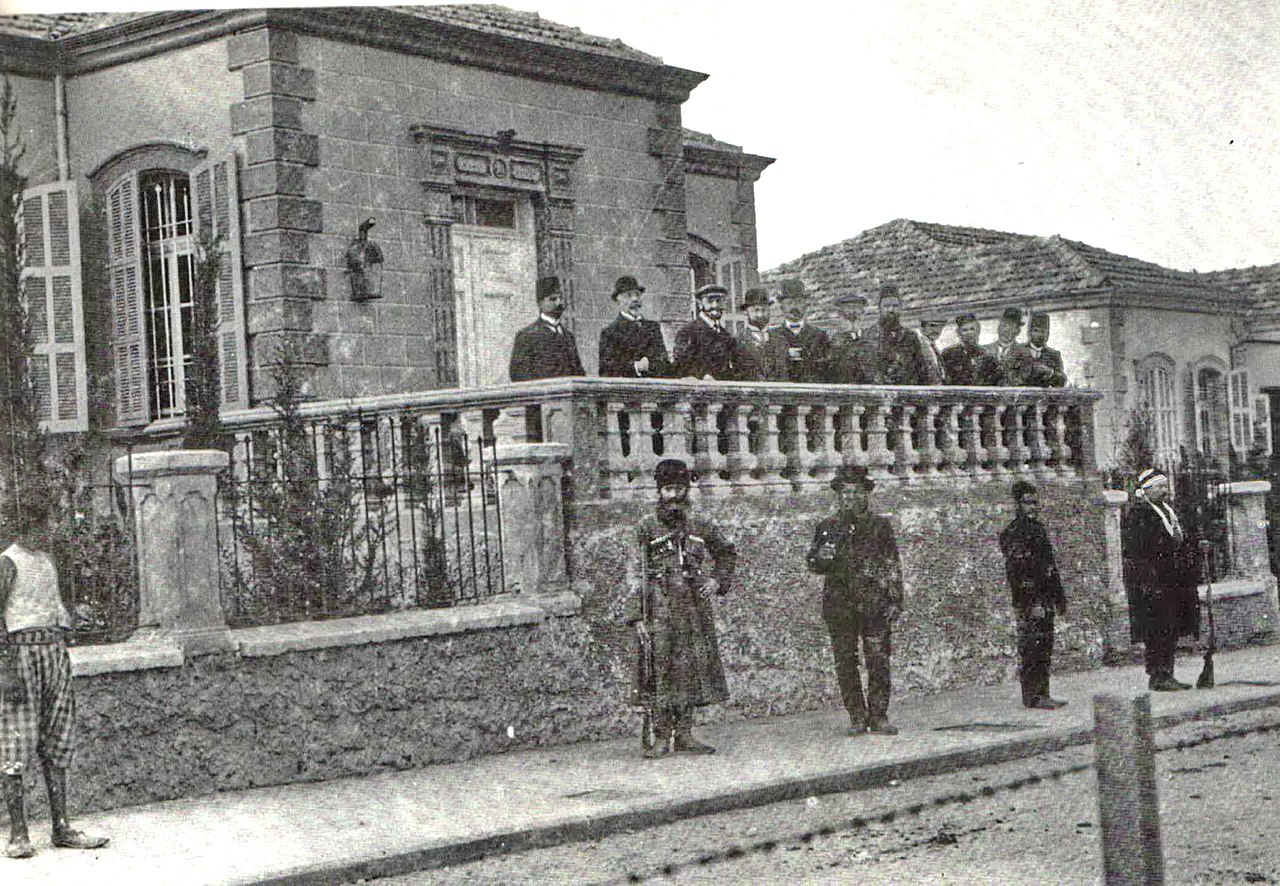Do you want to see where it all began? Where the State of Israel was born? Then visit Independence Hall, a small, unassuming building in the heart of Tel Aviv. Imagine, a gathering of some of the most iconic names in Jewish history, including David Ben Gurion, Golda Meir, and Moshe Sharett.
 The main hall at the museum, where Israel's independence was declared in 1948
The main hall at the museum, where Israel's independence was declared in 1948
Here they stood on 14 May 1948 and signed the Declaration of Independence. On a visit to Independence Hall you can learn all about the history of the building and about that important day. There are authentic artifacts, historic photographs, and several fascinating displays.
Note: The Independence Hall is undergoing extensive renovations and will reopen sometime before the end of 2025. When the museum reopens it will be nothing like the former museum - stay tuned!
In 1909 a group of Jewish families gathered near where Independence Hall stands today. They held a lottery for plots of land in Ahuzat Bayit, the new Jewish neighborhood established outside the walls of adjacent Jaffa. Meir Dizengoff acquired plot number 43 and built his family home. Dizengoff went on to become Tel Aviv’s first mayor. The family lived here through the 1920s first as a single-story home and later they added a second floor.
 A Tel Aviv city council meeting, 1910
A Tel Aviv city council meeting, 1910
In the 1930s, after the death of Dizengoff’s wife, he donated the building to the city to establish an art museum. From 1932, the Tel-Aviv Museum of Art occupied the building while Dizengoff continued to live in an apartment on the roof. Rooms were added and renovations were made to accommodate the museum. The building was given a new façade and a wide staircase at the entrance.
Dizengoff was a significant figure in establishing the city of Tel Aviv, and he served as the city’s mayor for 25 years. He had a vision for the young city that he led to prosperity.
Pro Tip: In the past Independence Hall was called Dizengoff House. Just outside the building, you can see a statue of Dizengoff riding a horse.
At 16:00 on 14 May 1948 just 8 hours before midnight when the British Mandate in Palestine expired, a group of Jewish leaders gathered in the Tel Aviv Museum of Art, as there was not yet a government building. The event was not widely publicized as they didn’t want to risk the British attempting to prevent Israel’s establishment.
Ben Gurion opened the ceremony by banging his gravel on the table and the 250 people present spontaneously began singing the country’s new anthem. Then in the shadow of a picture of Theodor Herzl, flanked by two Israeli flags, Ben Gurion read out the Scroll of Independence. It took 16 minutes.
 Israel Declare Independence, 1948
Israel Declare Independence, 1948Then one after the other, the members of the National Council signed the declaration. The ceremony ended with a rendition of Israel’s new national anthem, Hatikvah, played by the Israel Philharmonic Orchestra. The event was broadcast live on the new radio station, Kol Yisrael as its first transmission.
Pro Tip: There is an Independence Trail that you can follow that leads you past the most important buildings in the city’s history including the Gutman House, Great Synagogue, Haganah Museum, and Independence Hall (among other places). Pick up a map of the trail from the information center located opposite 11 Rothschild Blvd.
The Museum of Art eventually moved to new premises and in 1973, the building became Beit Hatanach, a Bible Museum exhibiting art and historic artifacts related to the Bible and Eretz Israel.
In 1978, on the 30th anniversary of the State of Israel, a decision was made to restore the building to be as it was when the Declaration of Independence was signed and to recreate that historic scene.
The Independence Hall building (Image source: Talmoryair CC BY 3.0)
Original and reconstructed items were gathered, and Declaration Hall was recreated on the first floor to look as it did at the historic ceremony. The rest of the building became the Heichal Haatzmaut Museum (Independence Hall Museum), dedicated to all things related to the country’s independence.
Pro Tip: Until the renovations of Independence Hall are complete, there is a temporary visitors center in the East Lobby of the Shalom Meir Tower.
The entrance is from 4 Ahuzat Beit Street, and the exhibition is on the ground floor. Here you can see three exhibitions focused on Tel Aviv, independence, and Dizengoff. Entrance is free and the tower is open Sunday to Thursday 07:00-19:00 and Friday and holiday eves 07:00-14:00, Saturday and holidays, closed.